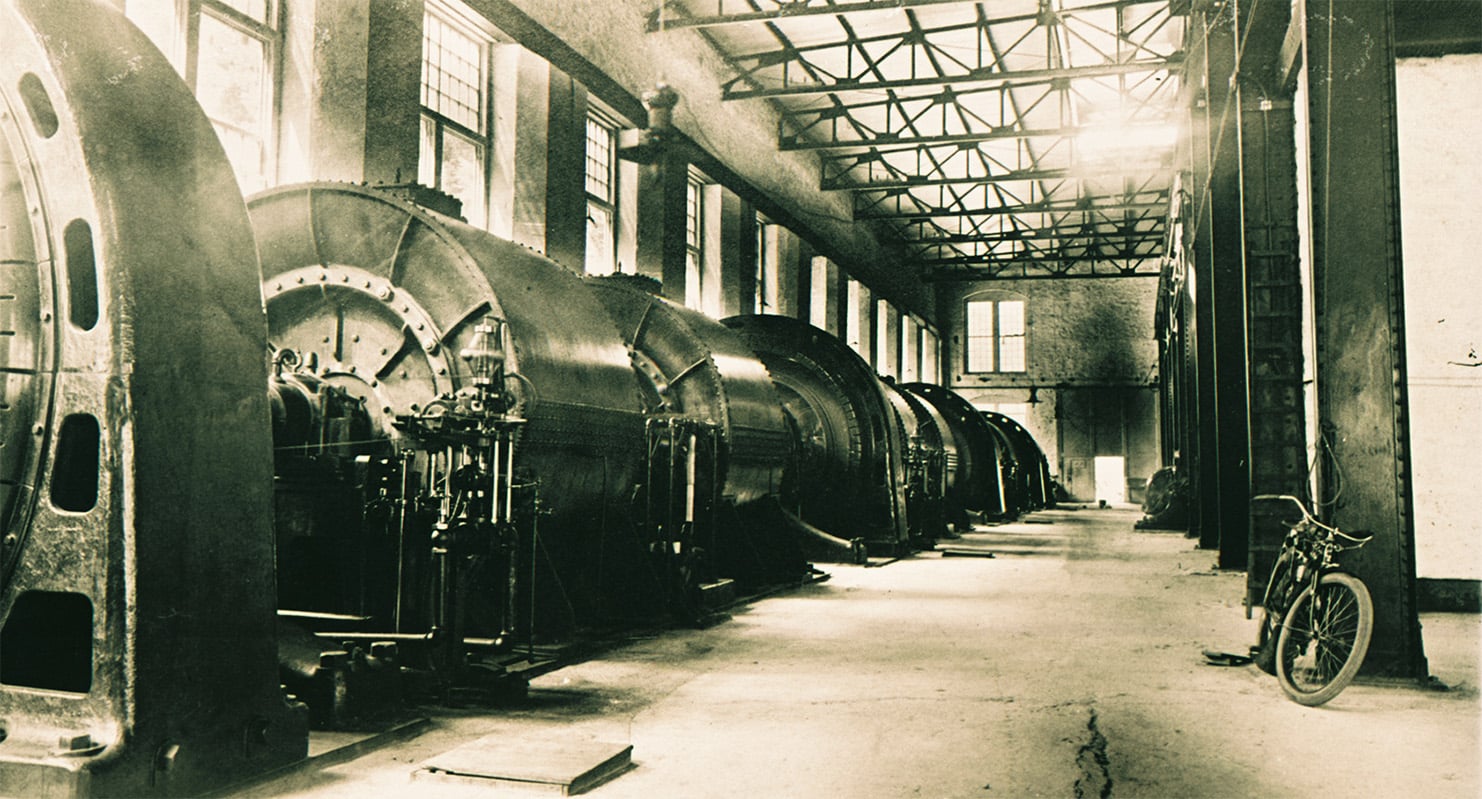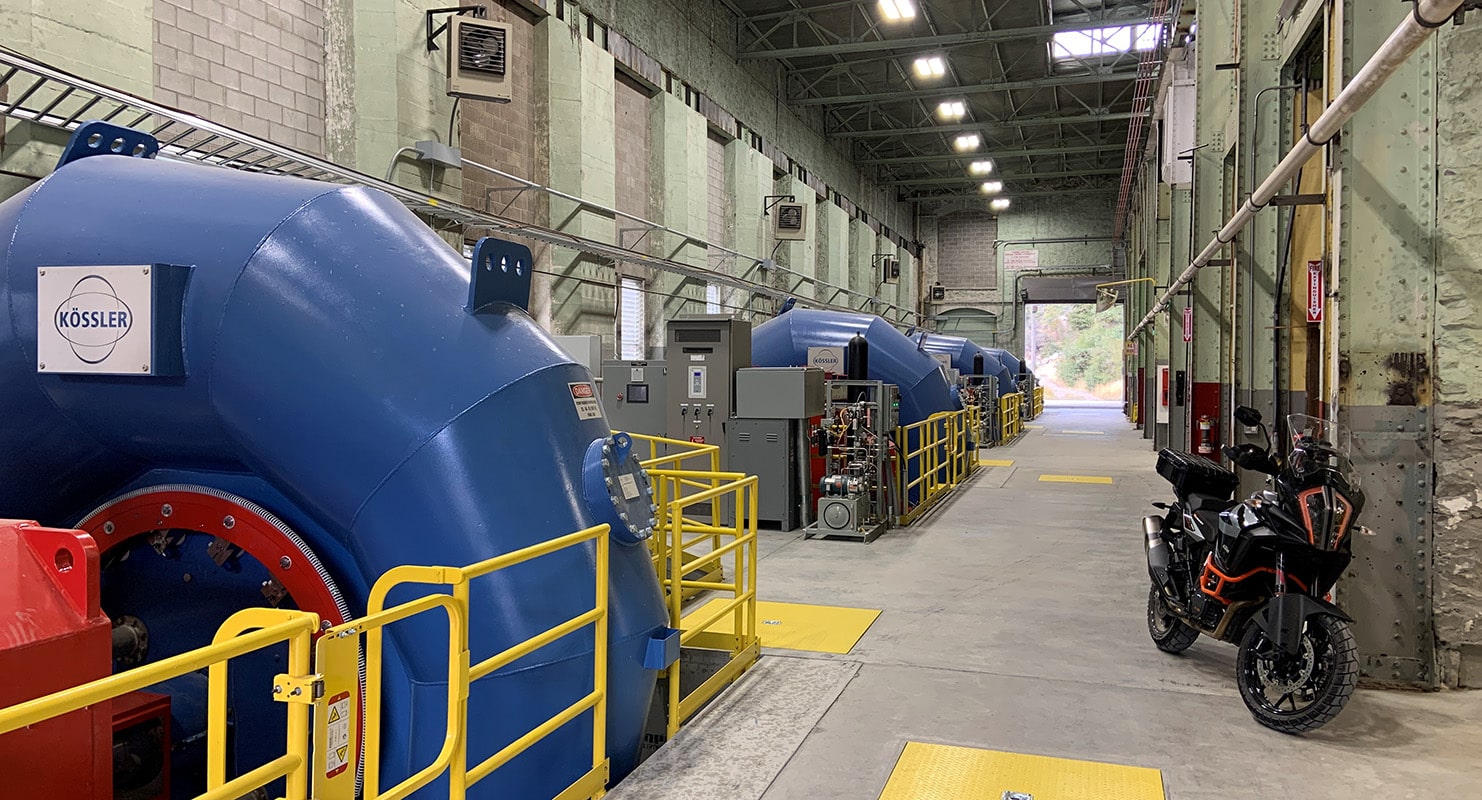
Madison Hydroelectric Plant Powerhouse
Unique Challenges and Unexpected Conditions
Morrison-Maierle was the design engineer for the civil improvements to allow for the complete replacement of the four original 100-year-old turbine and generator units at the Madison Hydroelectric Plant Powerhouse, owned by NorthWestern Energy. The new turbines were completely different from the originals, which required a large-scale demolition, dewatering, and new structural concrete and anchorage to place the turbine and generators into the powerhouse.
Working within a historic footprint with minimal and rudimentary floor plans, the project team encountered several obstacles that required unique approaches and creative design thinking.
Services and Highlights
-
3D model development and coordination with equipment suppliers
-
3D scanning of powerhouse
-
Construction specifications
-
Construction support
-
Demolition plans
-
Permitting and regulatory approvals
-
Structural engineering design
-
Water retaining structure design

Project Location
The Madison Dam and Hydroelectric Plant are located on the Madison River in the southwestern part of Montana. The timber-crib dam was constructed in 1906 to replace a similar 1901 dam and powerhouse on the same site. The dam is 39 feet high and 257 feet long at its crest and is placed into the narrows of the Bear Trap Canyon.
The hydro project is a run-of-the-river configuration. The reservoir it creates, Ennis Lake, is 2.6 miles long and has a maximum storage capacity of 42,053 acre-feet. The powerhouse is constructed of rock masonry with a concrete slab infill. The original turbine and generator units were first commissioned in 1906 and operated until 2019, when Morrison-Maierle began the replacement project.
Retrofitting a Historic Facility
Morrison-Maierle designed a retrofit of the Madison Hydroelectric Plant Powerhouse to replace the four existing horizontal Samson double-runner Francis turbines with four new horizontal Francis turbines. The retrofit included stabilizing the over 100-year-old powerhouse rubble walls, demolishing the existing powerhouse floor, developing construction access and sequencing, and providing new structural foundations and anchorages for the new turbines.
The new turbine and generator units have a transition inlet section that ties to the existing penstock with a new draft tube. Morrison-Maierle also provided a 3-D laser scan of the powerhouse facility to develop an accurate as-built model used to develop construction drawings and layouts. The equipment suppliers also used this model to integrate detailed 3D models of the proposed equipment.


Adjusting for Unexpected Conditions
The Madison project was successfully completed despite many unique challenges and unexpected conditions. The original plans for the powerhouse were minimal and rudimentary, providing very little helpful information on which to base the design. Very early in the demolition stage, the project team discovered that where solid concrete was expected within the powerhouse floor, there was a thin slab over rock and sand fill.
In addition, the cofferdam that was constructed to isolate the powerhouse from the river did not perform as intended due to numerous unforeseen seepage paths and the powerhouse fill. The demolition plan had to be adjusted for water-filled excavations, and oil releases from past spills regularly occurred.
To adjust for the numerous unexpected conditions, Morrison-Maierle worked cooperatively with the owner and contractor to develop a plan to re-sequenced portions of the work and added large-scale use of tremie-placed structural concrete to vastly reduce the time and expense of dewatering the powerhouse.
Numerous impacts to the project were caused by the COVID-19 pandemic, which began shortly after the construction started. Morrison-Maierle supported the construction efforts as the design engineer and was a core member of the multi-national team that completed the project to meet the owner’s expectations.
Related Projects

Flower Creek Dam
Morrison-Maierle’s new Flower Creek Dam project allows the City of Libby to control the level of the reservoir that helps protect downstream fish habitat with a simplified operation.

Hauser Dam
The Hauser Dam project required surveying the space and replacing its old horizontally-designed turbine with a new vertically-designed version in the powerhouse that was built in the early 1900s.

Jocko Area Canal Conversion
Morrison-Maierle designed the first two phases of the Jocko Area Canal Conversion pipeline project. The pipeline design consisted of over 110,000 linear feet of pipeline ranging from 48-inch diameter